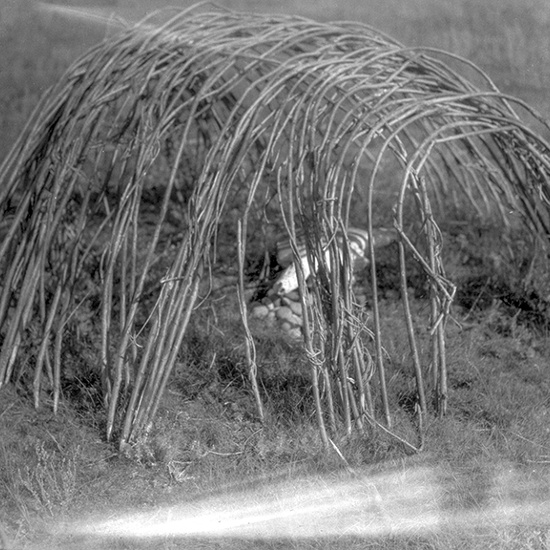Sweatlodge
Within the Edmonton River Valley, in present day and historically, one can see the remnants of sweatlodges in ceremonial spaces. Constructed to allow participants to reconnect with Mother Earth and cleanse one's body, these ceremonies remain part of everyday life for First Nations people.
Within the Edmonton River Valley, in present day and historically, one can see the remnants of sweatlodges in ceremonial spaces. Constructed to allow participants to reconnect with Mother Earth and cleanse one's body, these ceremonies remain part of everyday life for First Nations people.
These semi-permanent structures, utilizing willow as skeletal material with a variety of coverings, would serve as an intimate lodge for reconnection to mother earth. Designed to retain heat and energy, while serving as a cleansing environment, the sweatlodge could be constructed to survive multiple uses, depending on the Elder’s preference. The relationship between the four elements would be embraced in a structure such as this, and the ceremonies carried out inside would be impactful to the attendees.
Like many other First Nations structures, these facilities were designed with complex architecture at the root, while also balancing expediency and practicality. Examples can be found within green spaces in Edmonton such as Jackie Parker Park and the Kihciy Askiy project. As with other examples of First Nations structures, the uses and construction would differ amongst Nations, and further information should be obtained from First Nations knowledge keepers and Elders.
Details
Type
Indigenous
Designation Status
No Historic Recognition
Address
,Edmonton, AB
Neighbourhood
TBD
Time Period
Pre-Contact and Fur Trade: 11,000 BCE to 1870
Urban Settlement: 1870-1904
Urban Growth: 1905-1913
The War Years: 1914-1945
The Post War Years: 1946-1970
Year Built
n/a
Architects
Architectural Styles
Character Defining Elements
Flowing lines , Semi-permanent , Natural materials , Round shape
